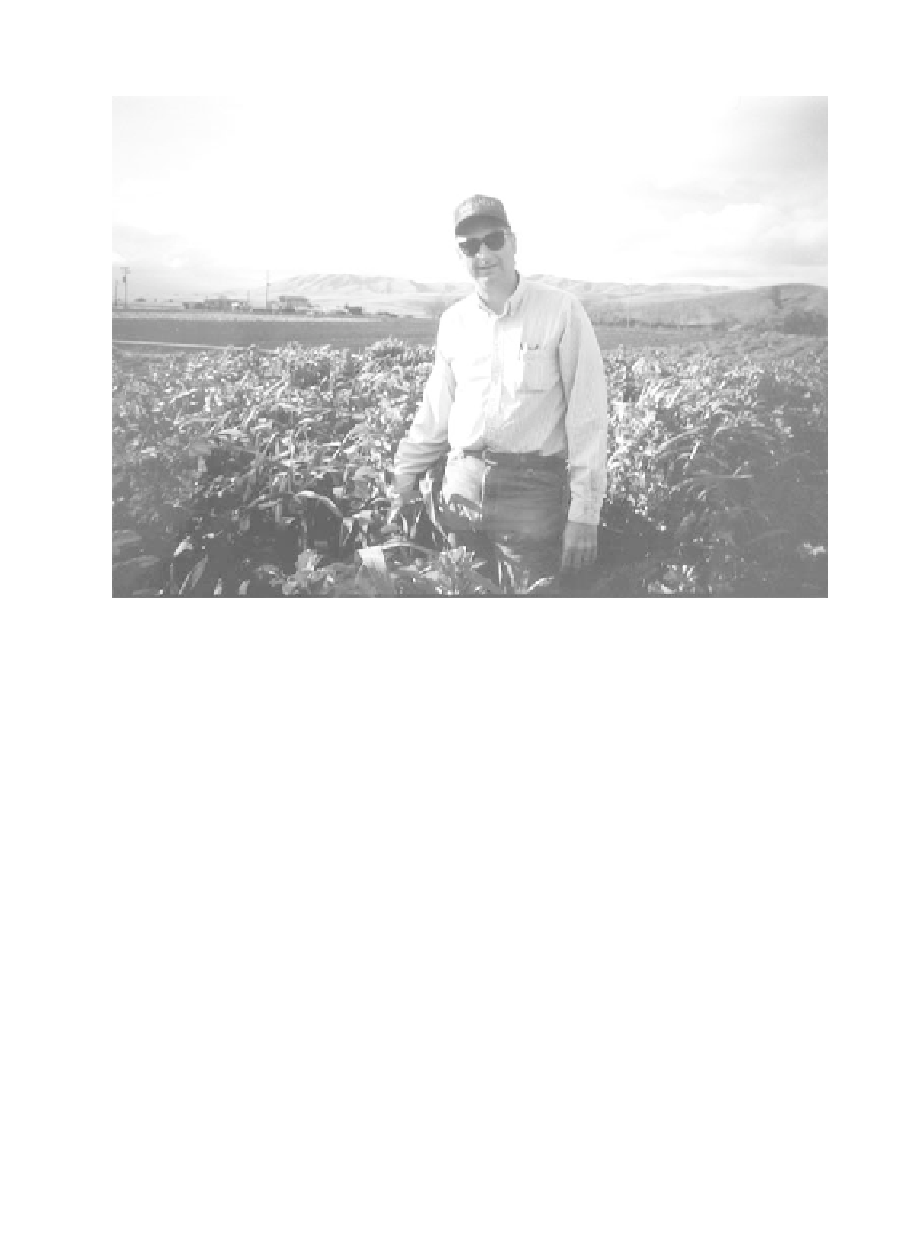Agriculture Reference
In-Depth Information
1
2
3
4
5
6
7
8
9
10
11
12
13
14
15
16
17
18
19
20
21
22
23
24
25
26
27
28
29
30
31
32
33
34
35
36
37
38
39
40
[138],
(48)
Lines: 519 to 521
———
3.9725pt PgVar
———
Normal Page
PgEnds: T
E
X
Ph
il Foster on his California vegetable farm. (Credit: author)
ey
es up to something different.” He learned that there was a small organic
m
arketing company looking for more growers, so he took five acres and
st
arted growing about ten organic crops. Times were tough. “It was very
ha
rd to make money on cannery tomatoes, especially on a small-scale farm.
Se
venty acres was a small amount for California. I just spun my wheels.
Th
ere was no money made. There weren't really any good options.” But his
or
ganic acres did turn a profit. “The five acres that were organic, we made
a
little money off that. And it peaked my interest in soil fertility, how to
gr
ow crops without commercial fertilizers. All these things that were kind
of
new and interesting.” Since his initial organic certification in 1989,his
fa
rm continued to evolve. Now he owns 30 acres and leases 220 more. “It
is in two different locations that are approximately twelve miles apart, but
in that twelve miles, there is quite a significant climate change, especially in
the summer.” This is beneficial, as “we can grow lettuces, celery, and kind
of cool season crops in the summer here, and then have some crops that are
relatively warm season like melons and watermelons, which are usually not
grown much in this area.”
The three-year transition to organic certification is often a major stum-
bling block for farmers converting their conventional ground. Phil was lucky
[138],
(48)





















